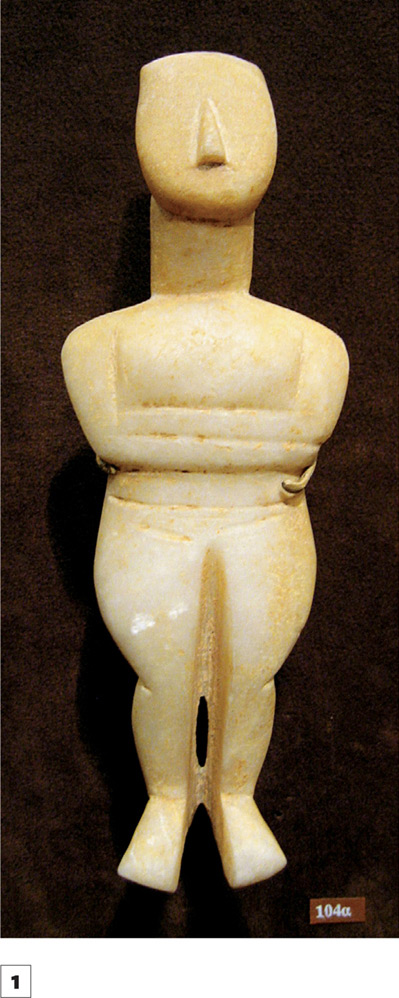 Cycladic female figurine, c. 2300 BCE, Marble, 6 13/16 in (17.3 cm) high
Cycladic female figurine, c. 2300 BCE, Marble, 6 13/16 in (17.3 cm) highREDUCING A STATEMENT TO ITS FUNDAMENTALS
Simplifying form, or editing complex situations into a readable set of forms or ideas, is one of the foundational strategies of art. Many tribal cultures pursue an art based on severe simplification, and ancient civilizations generally rendered figures and settings as simplified formations. More sophisticated simplification occurred in the Renaissance, particularly in the work of Piero della Francesca (1415–92), whose deep interest in Euclidean geometry led him to reduce forms towards the condition of geometric solids. A great deal of modern abstract art involves the reduction of appearances to sets of simple forms. For example, the French artist Fernand Léger (1881–1955) reduced both human and machine forms to highly simplified motifs, which he then built into almost entirely flat compositions.
The process of simplification can be broken down into four stages:
• Objective
The subject is examined carefully.
• Analytic
The central and distinguishing features of the subject are identified.
• Reductive
Extraneous, unnecessary, confusing, and distracting information is stripped away.
• Synthetic
The remaining information is combined to make a new image that exhibits clarity and coherence.
Simplification can be applied to any element or feature of an artwork. Color can be simplified, as can form, shape, mark, and line. The process can be applied equally to a contemporary video installation as it can be to an oil painting or a monumental sculpture.
The kind of expression that emerges from a process of simplification can vary. Constantin Brancusi (1876–1957) made sculptures based on natural subjects that were reduced to simplified shapes of great beauty, projecting a kind of purity of insight and sensual warmth. On the other hand, many Expressionists, such as Max Beckmann (1884–1950), simplified motifs to reveal a vision that was disturbing and at times brutal. Other artists, such as the Italian painter Giorgio Morandi (1890–1964), deployed a process of simplification in order to yield a quiet and suggestive vision. Rather than dictate any one point of view, simplification allows the artist to reveal his vision and present it in a concentrated, persuasive, and accessible fashion.
See also: Sufficiency of Means on page 182; Abstraction on page 10; Minimalism on page 112
 Cycladic female figurine, c. 2300 BCE, Marble, 6 13/16 in (17.3 cm) high
Cycladic female figurine, c. 2300 BCE, Marble, 6 13/16 in (17.3 cm) high

 Piero della Francesca (1415–92)
Piero della Francesca (1415–92)
The Baptism of Christ, c. 1450, Tempera on panel, 65 3/4 × 45 11/16 in (167 × 116 cm)